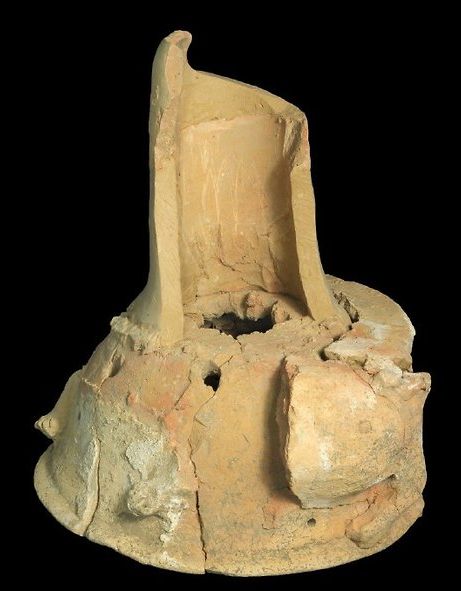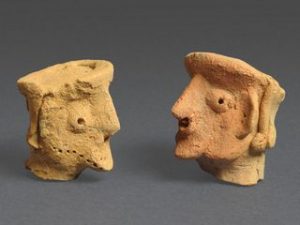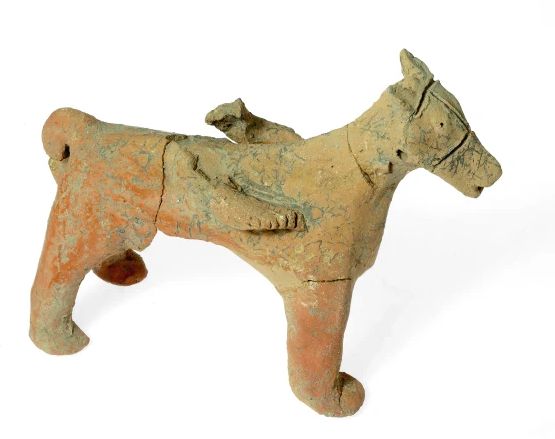
Excavations in Tel Motza, 5 KM west of Jerusalem, have revealed a sanctuary dating back to the 10th century BCE and surprisingly similar to Solomon’s Temple as described in I Kings 6. First excavated in 1993 prior to expansion of the Jerusalem Tel Aviv Highway, a cultic structure was discovered in 2012, dating from between the 10th and 6th century BCE. Intriguingly, this sanctuary showed no signs of either burning or destruction. This raises the question of what kind of worship the shrine was used for, and who frequented the area.
The site’s upper layers were excavated prior to construction of an immense road bridge bypassing the Motza neighborhood, then covered in protective sand during the roadworks. Now that the bridge is complete, archaeologists from Tel Aviv University are back at work, under the direction of Prof. Oded Lipschits and Shua Kisilevitz, and the current finds are fascinating.
“The artifacts show that Motza was an important economic and administrative center serving the surrounding fertile valley, with dozens of silos and two large storehouses for produce deposited at the site,” Kisilevitz informed the press. “A monumental temple structure, of a type familiar from north-Syrian temple buildings such as Ayn Dara and characteristic of the ancient Near East, was unearthed in the middle of the site. Finds include an altar [made of unhewn stones as required by the Bible], a table for meal offerings, and a wide range of cultic vessels, including human and horse figurines, and a large decorated cult stand. The shrine is the only one of its kind found to date within the borders of the ancient kingdoms of Israel and Judah. Its layout and the artifacts’ decorative style fit the descriptions of Solomon’s Temple in Jerusalem from I Kings chapter 6.”
Found beneath a cultic structure dating from the late First Temple era, this rectangular shrine featured a raised, stone floor at one end, creating an inner sanctum reminiscent of the biblical Holy of Holies. The finds at Motza raise four fundamental questions:
How can such a major temple have existed so close to Jerusalem throughout the first Temple period, without ever being mentioned in the Bible?
What kind of rituals were practiced here? A refuse pit found next to the altar yielded mainly goat and sheep bones, suggesting only kosher sacrifices. Yet the human and animal figurines unearthed onsite definitely don’t point to an Israelite, monotheistic place of worship.
Why are there no signs of Hezekiah’s and Josiah’s religious reforms, purportedly putting an end to worship outside the Temple in Jerusalem in the eighth and seventh centuries respectively? Other cultic sites, such as Tel Be’er Sheba and Tel Arad, were defiled and destroyed. Why did Motza remain untouched?
How did this Temple survive the wholesale destruction of Jerusalem and the First Temple by the Babylonians in 586 BCE?
Professor Oded Lipschitz summed up the excavation to date:
“The finds at Tel Motza – past, present and future, are crucial to our understanding of the First Temple period and to any comparison of the biblical account with the archaeological record. The very discovery of a sanctuary resembling Solomon’s Temple, just a few kilometers away from Jerusalem, raises many questions, as the Bible frequently decries cultic activity outside the Temple, explicitly stating that the God of Israel is only to be worshipped in Jerusalem. We hope our discoveries will provide answers to a range of intriguing questions:
Who built the Temple at Motza, and when? What rites were practiced here over time? What kind of relations existed between the Motza community and those worshipping in the Temple? Did the priests of Motza accept the authority of Jerusalem’s rulers and its priesthood? If so, when? Assuming that the temple at Motza outlived Hezekiah’s and Josiah’s reforms, did it continue to function after the Babylonian destruction?”
–
Could this be an example of what the Bible refers to as “bamoth” or “high places,” such as in II Kings 14:4, “The high places were not removed; the people continued sacrificing and burning incense on the high places” and many other similar expressions?
It’s worth pointing out that an enormous prehistoric site has recently been revealed nearby, which was also a total surprise to archaeologists.
Two further excavation seasons are currently scheduled at Tel Motza, this spring and a year later, with students and researchers from all over the world but primarily Israel, Germany, the Czech Republic and the USA. The archaeological community is hoping for many more surprises that may shed light on the riddle of this temple and add to our knowledge of the period.
Meanwhile, given that the authorities evidently tolerated this sanctuary rather than destroying it, the relic may reflect an easily overlooked detail of Solomon’s reign. I Kings 11:7–8 tells us that after completing the Temple, Solomon built high places just outside Jerusalem for his foreign wives’ idolatrous rituals:
Then did Solomon build a high place for Chemosh, the abomination of Moab, on the hill that is before Jerusalem, and for Molech, the abomination of the children of Ammon. And likewise did he for all his strange wives, who burnt incense and sacrificed unto their gods.


